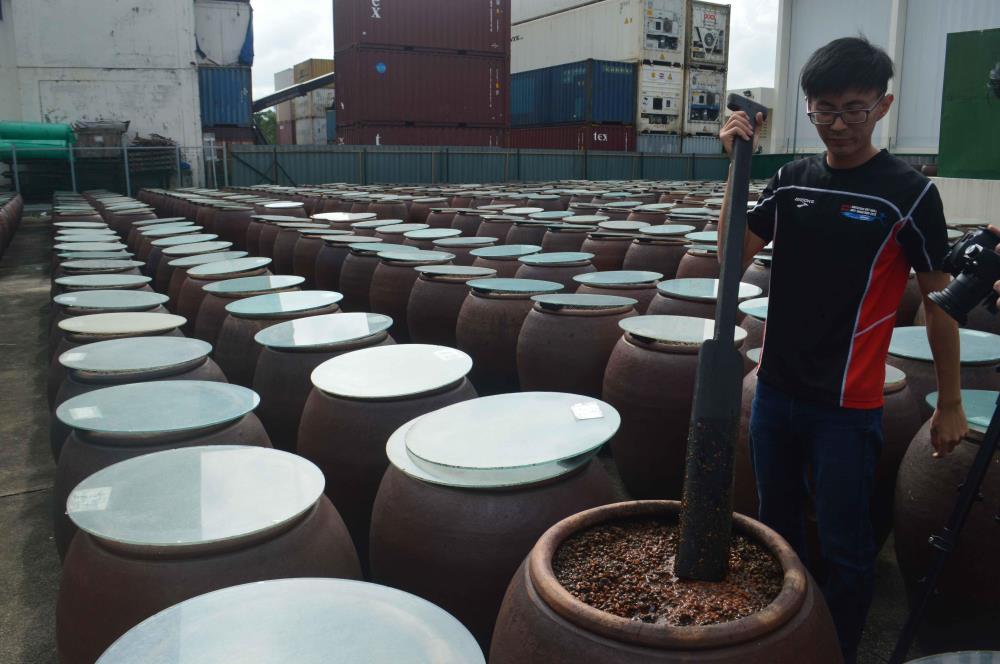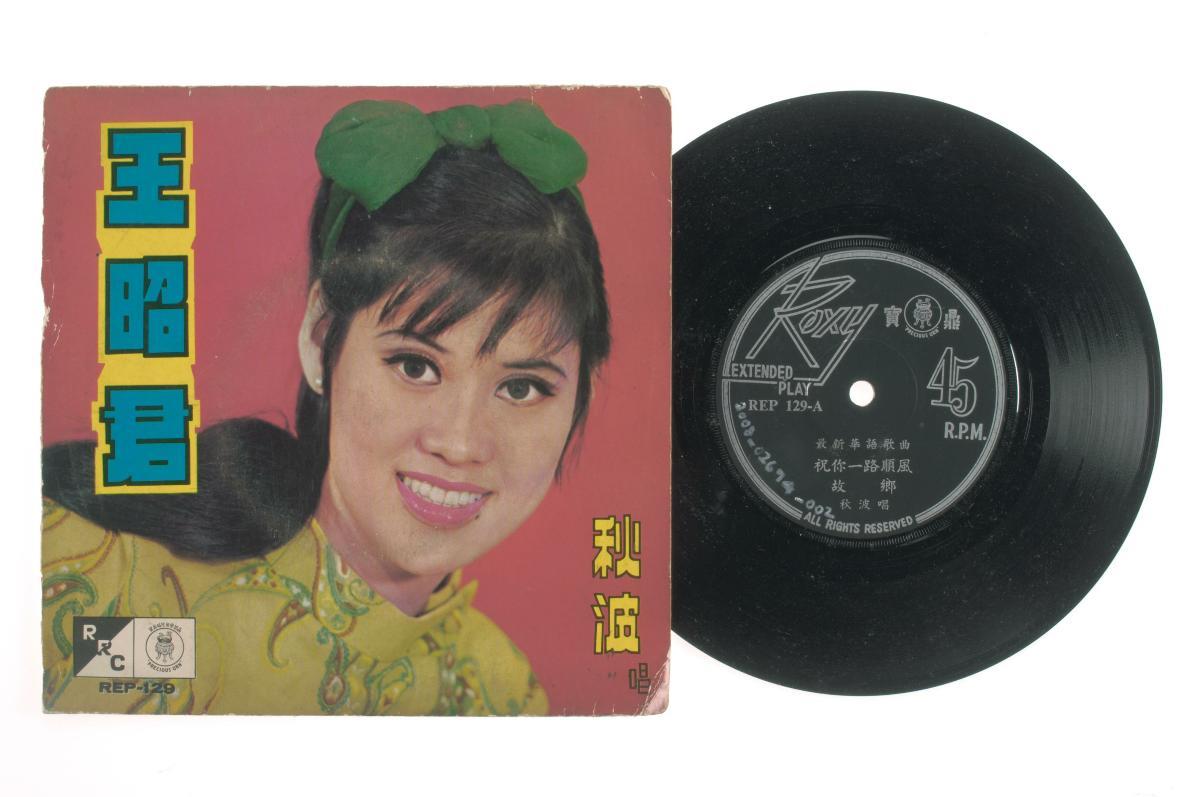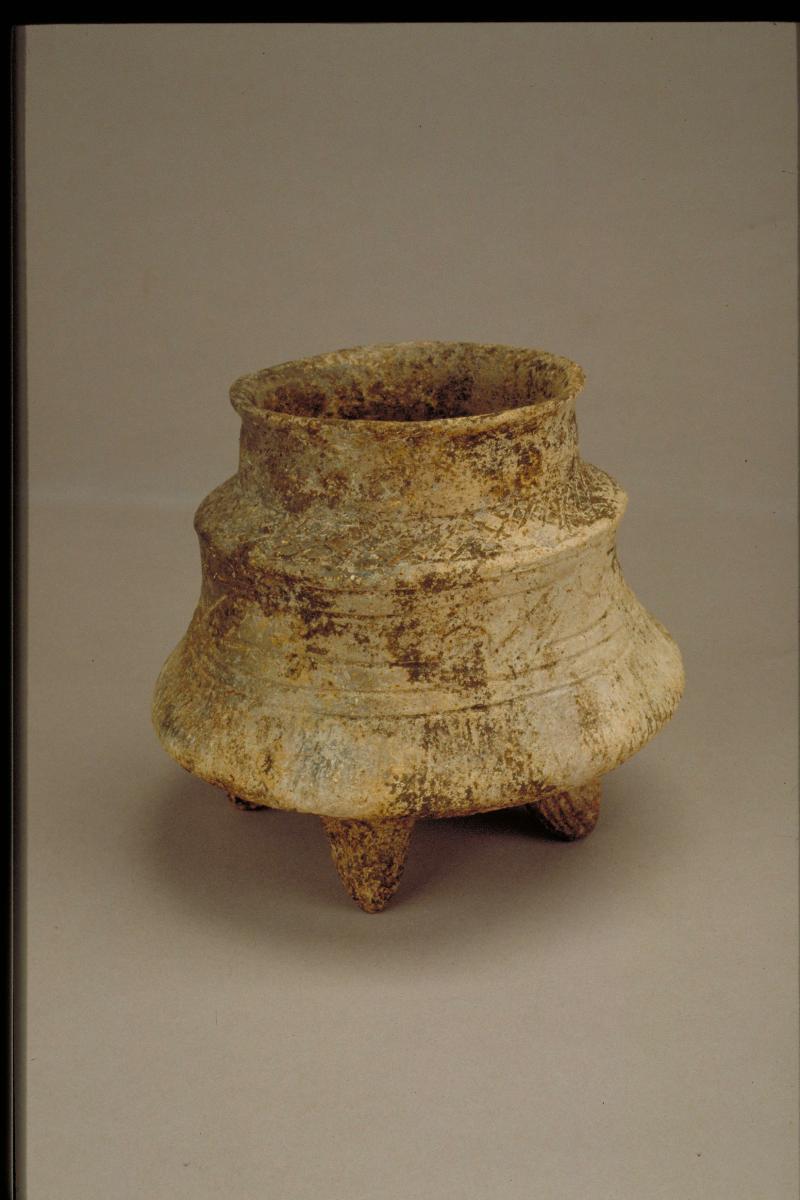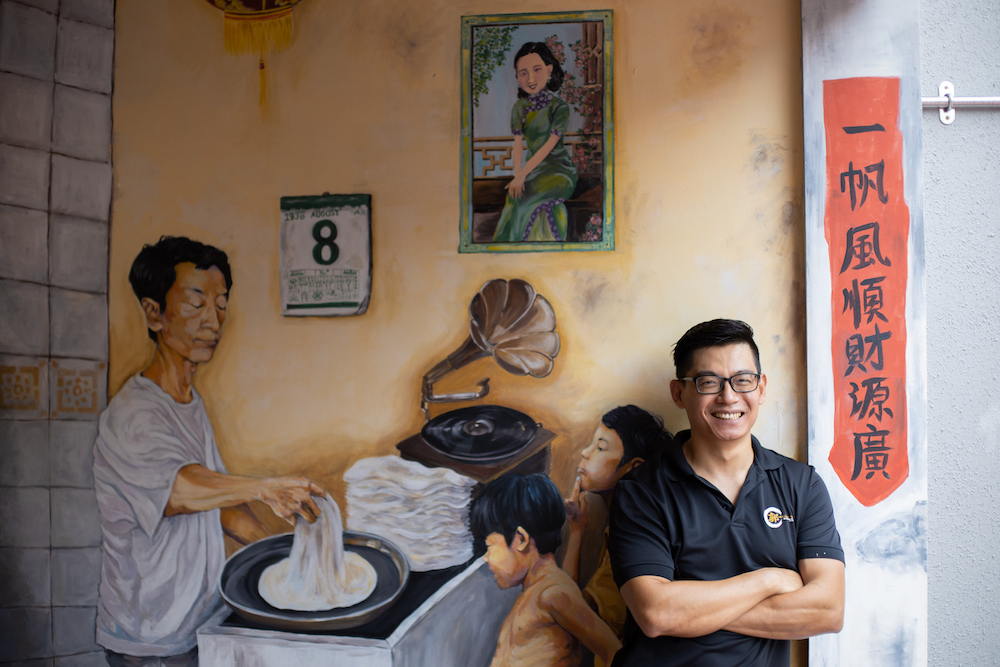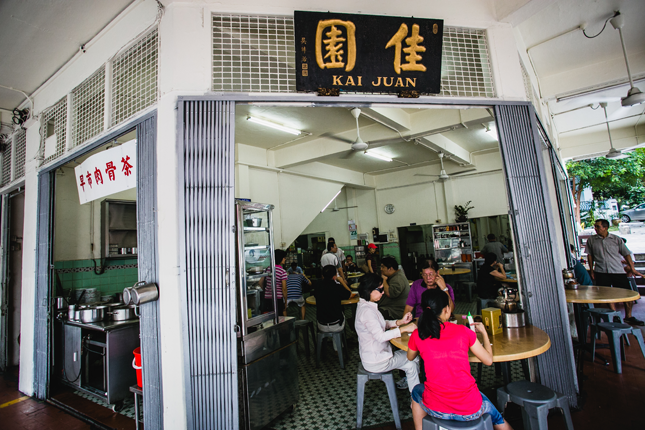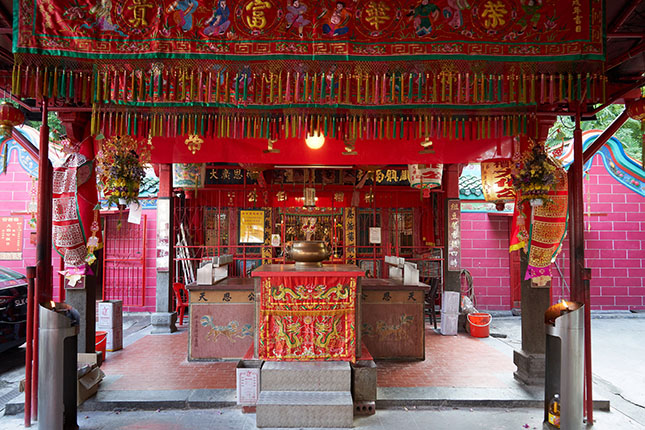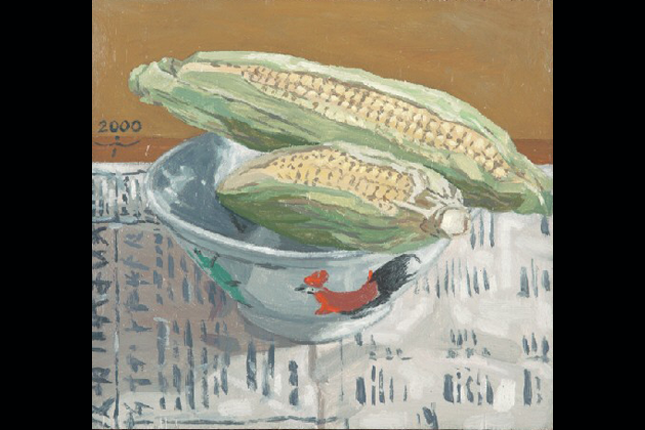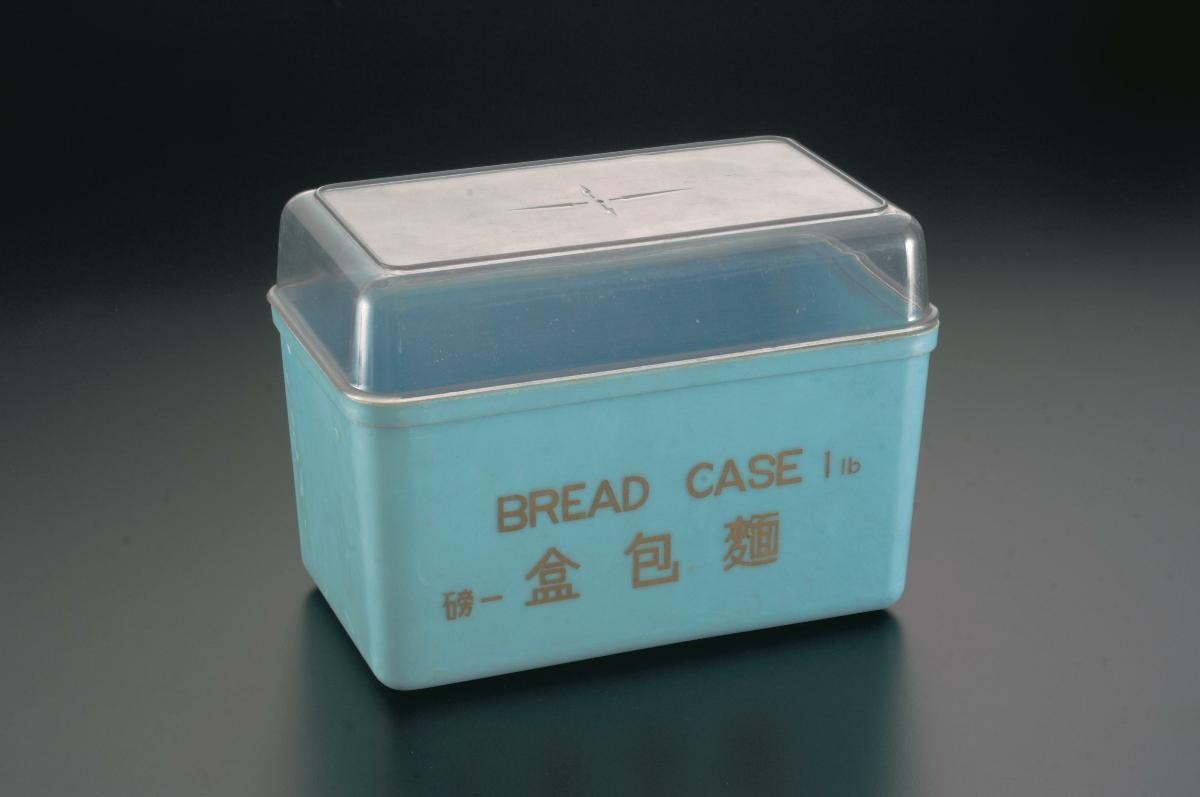Making of Soya Sauce
Chinese sauces, such as soya sauce, have been made in Singapore for around a century and form the foundation of many different types of the food in Singapore. They are made by fermenting moulds and beans in vats.
The making of soya sauce is an age-old tradition, and it requires time, from the point where mould ferments, to the point where beans are left in vats to ferment. Both light and dark soya sauces are made by fermenting soya beans with a mixture of mould and yeast fungi.
There are variations in soya sauce, where Cantonese-style dark soya sauce is said to be characterised as dark in colour, sweet in taste, with the light soya sauce being light in colour. In comparison, Hokkien-style light and dark soya sauces are not so distinct in viscosity or colour.
Geographic Location
Soya sauce is popular as an ingredient commonly used in preparation of food in Asia, and is believed to have originated in China. In 1918, The Gardens’ Bulletin reported that most attempts to grow soya beans in Singapore were not successful, even though the local climate makes the fermentation process easier and faster as additional heating is not needed to heat the beans.
Eventually, soya sauce production took off in Singapore. During the late 1930s, there were more than 30 soya sauce factories in Singapore. Most of them were found in residential areas near the Central Business District, including Kallang, Lavender, and Outram. Nowadays, manufacturers are located in industrial estates such as Jurong and Defu, due to rezoning and government redevelopment plans over the years.
Soya sauces are retailed in nearly every provision shop and supermarket, reflecting the status of this quintessentially Singaporean pantry item, as an ingredient used in everyday meals.
Communities Involved
In Singapore, sauce-making establishments are mostly owned and run by Cantonese or Hokkien families. However, people of other dialect and ethnic groups are not barred from entering the trade.
Many of the current sauce manufacturers in Singapore started out in the 1930s and 1940s with small factories. These include long-established brands, such as Tai Hwa, Kwong Woh Hing, and Yeo Hiap Seng which was the earliest known manufacturer in Southeast Asia.
Many soya sauce manufacturers join the Singapore Food Manufacturer’s Association (SFMA), which protects interests of local businesses in local industries. Some soya sauce manufacturers also maintain a close relationship with academic institutions, such as staff and students at the National University of Singapore, who have studied at length on fermentation processes, to advance technologies related to soya sauce manufacturing.
Customers of soya sauce products are from different ethnicities, even though majority are ethnic Chinese.
Associated Social and Cultural Practices
For soya sauce, the traditional method of preparation requires top-grade soya beans to be soaked overnight. The beans are then washed and placed in steamers to be cooked so as to maintain their nutritional content. Next, wheat flour is heated on an iron pan until it turns brown. Both the wheat flour and beans are then added to bamboo or rattan trays to ensure that they ferment without being crushed.
It can take about a year for light soya sauce to mature under the sun. A good sauce is said to have a fragrant aroma, with a sweet and slightly bitter taste. As for dark soya sauce, the bean concentrate is usually sunned for another four months.
Preparation instructions for soya sauce are not widely disseminated and the knowledge of making soya sauce is largely transmitted within the trade. Due to the small domestic market, Singapore’s soya-sauce businesses are mostly export-oriented.
The advancement of technology has led to the production of other condiments including vinegars as well as sweet, oyster, chilli, plum, and lemon sauces. Sauce factories also typically produce taocheo, a soybean ferment. Taocheo is usually fermented in earthenware jars and is still stirred by hand periodically in traditional establishments, such as Kwong Woh Hing. Kwong Woh Hing, in particular, continues to produce soy sauce the traditional way, preferring to age its sauces with a longer time-frame, of at least a year.
Experience of a Practitioner
Mr Thomas Pek Ee Perh is the CEO of Tai Hua Food Industries which produces and distributes locally made soya sauce products. Tai Hua was established by Mr Pek’s grandparents in 1947 and is currently managed by the family. Mr Pek is also the president of the Singapore Food Manufacturer’s Association (SFMA), of which Tai Hwa is a member.
Under Mr Pek’s direction, Tai Hwa has set its eyes on the global market, creating a strong brand that is associated with quality and retaining its traditional methods of producing soy sauce. In order to compete in the global market, Mr Pek and his grandfather sought to mechanise and streamline processes relating to the craft itself. Mr Pek also works closely with government agencies, who have supported SFMA’s efforts to overseas showcases in countries such as China, Saudi Arabia, and the Netherlands. Mr Pek firmly believes that with the injection of younger blood, Tai Hwa will benefit from new ideas.
Nanyang Sauce Brewery is a another soya sauce maker in Singapore. Second generation owner, Mdm Tan Poh Choo, draws on her 50 years of traditional sauce-making experience and works closely with her team of employees to ensure the consistent quality of their hand-brewed sauce. While the intensive brewing process is laborious may deter new entrants, the efforts of practitioners such as Mdm Tan has proven soya sauce’s ability to endure the test of time as a tradition and a craft. For her dedication to promoting and transmitting the craft of brewing traditional soya sauce to the next generation, Mdm Tan was recognised as a recipient of Singapore’s Stewards of Intangible Cultural Heritage Award in 2021.
Viability and Future Outlook
The sustainability of the practice depends on the younger generation carrying on the trade. The laborious work and long periods involved in making soya sauce require persistence and a dedication to quality. Nonetheless, the willingness of the establishments to adapt and collaborate with partners indicates a willingness to adapt to changing times and trends. For instance, to encourage greater interest amongst the younger generation, Tai Hwa is reaching out to students from tertiary institutions to partner with local food manufacturers with the aim of developing new food products.
There have also been efforts to educate the public about the process of making soya sauce and to cultivate sauce appreciation. Nanyang Sauce carries out sauce appreciation and sauce- making workshops for the public and educational programmes for students, to promote awareness of and share the skills involved in the age-old craft of brewing traditional soya sauce. They also carry out tours of the grounds of Nanyang Sauce premises. Companies, such as Kwong Woh Hing, embraced digital opportunities by establishing an online presence.
References
Reference No.: ICH-077
Date of Inclusion: October 2019
References
Lee, Tee Jong. The Soy Sauce Towkay: The Story of Yeo Thian In, Founder of Yeo Hiap Seng Sauce Factory in Singapore. Singapore: Campus Crusade Asia Limited, 2010.
Leong-Salobir, Cecilia. Urban Food Culture: Sydney, Shanghai and Singapore in the Twentieth Century. Palgrave Macmillan, 2019.
Shurtleff, William and Akiko Aoyagi. History of Soybeans and Soyfoods in Southeast Asia (13th Century to 2010). Lafayette: Soyinfo Centre, 2010.
Shurtleff, William and Akiko Aoyagi. History of Soy Sauce (160 CE to 2012). Lafayette: Soyinfo Center, 2012.




